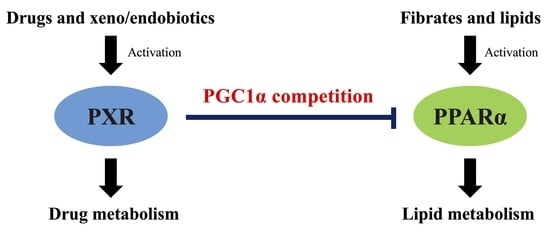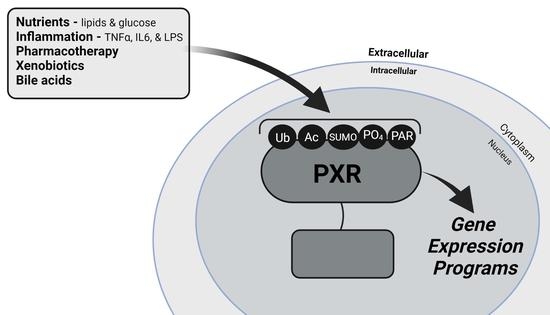Current Trends in Xenobiotic Sensing Nuclear Receptor Research—The Many Facets of PXR and CAR
A topical collection in Cells (ISSN 2073-4409). This collection belongs to the section "Cell Signaling".
Viewed by 44033Editors
Interests: nuclear receptors; molecular mechanisms of gene regulation; drug metabolism and transport; drug-induced resistance of cancer cells; non-alcoholic fatty liver disease; pharmacogenomics
Interests: nuclear receptors; drug discovery; nuclear receptor modulators; development of cancer therapeutics
Special Issues, Collections and Topics in MDPI journals
Topical Collection Information
Dear Colleagues,
The two closely related xenosensing nuclear receptors PXR (pregnane X receptor, NR1I2) and CAR (constitutive androstane receptor, NR1I3) are ligand-modulated master regulators of drug metabolism and transport. By enhancing the capacity of the body to detoxify and eliminate small-molecule drugs, their activation plays a central role in drug–drug interactions leading to adverse reactions or loss of therapeutic efficacy. In addition, PXR and CAR play distinct roles in the regulation of basic cell metabolic pathways, such as glucose and lipid metabolism, as well as in cancer cell proliferation and tumorigenesis. Due to their manifold roles, the development of both agonists and antagonists as potential therapeutics against metabolic diseases and cancer is of great interest.
In order to highlight recent findings in PXR and CAR research, this Topical Collection seeks manuscript submissions for original and review articles from all research disciplines. Topics may cover but are not limited to the discovery and characterization of novel ligands, structural elucidations, investigations on the role of PXR and CAR in cancer development and therapy, assessment of PXR- and/or CAR-modulated metabolic and signaling pathways, or the development of novel techniques and assays for studying receptor function.
We look forward to your contribution.
Dr. Oliver Burk
Prof. Dr. Björn Windshügel
Collection Editors
Manuscript Submission Information
Manuscripts should be submitted online at www.mdpi.com by registering and logging in to this website. Once you are registered, click here to go to the submission form. Manuscripts can be submitted until the deadline. All submissions that pass pre-check are peer-reviewed. Accepted papers will be published continuously in the journal (as soon as accepted) and will be listed together on the collection website. Research articles, review articles as well as short communications are invited. For planned papers, a title and short abstract (about 100 words) can be sent to the Editorial Office for announcement on this website.
Submitted manuscripts should not have been published previously, nor be under consideration for publication elsewhere (except conference proceedings papers). All manuscripts are thoroughly refereed through a single-blind peer-review process. A guide for authors and other relevant information for submission of manuscripts is available on the Instructions for Authors page. Cells is an international peer-reviewed open access semimonthly journal published by MDPI.
Please visit the Instructions for Authors page before submitting a manuscript. The Article Processing Charge (APC) for publication in this open access journal is 2700 CHF (Swiss Francs). Submitted papers should be well formatted and use good English. Authors may use MDPI's English editing service prior to publication or during author revisions.
Keywords
- ligands
- screening
- molecular modelling
- cheminformatics
- ADME
- tumorigenesis
- chemoresistance
- signaling
- metabolism
- mechanism of gene regulation




















